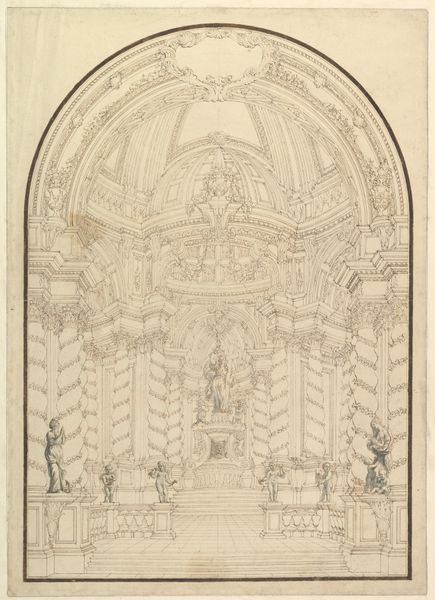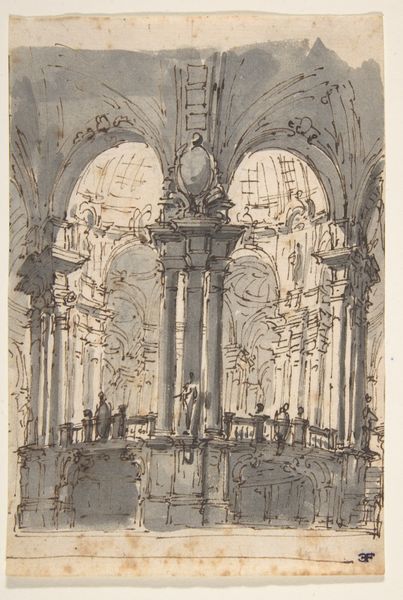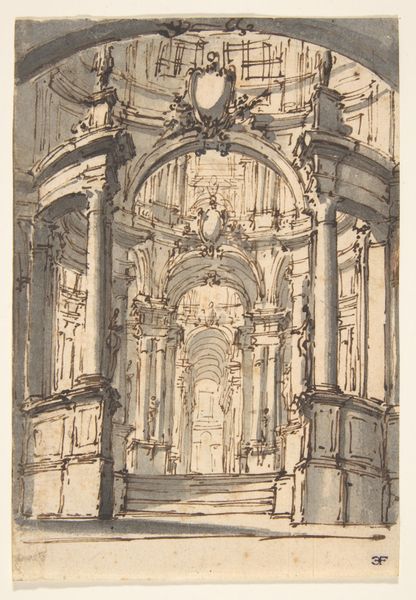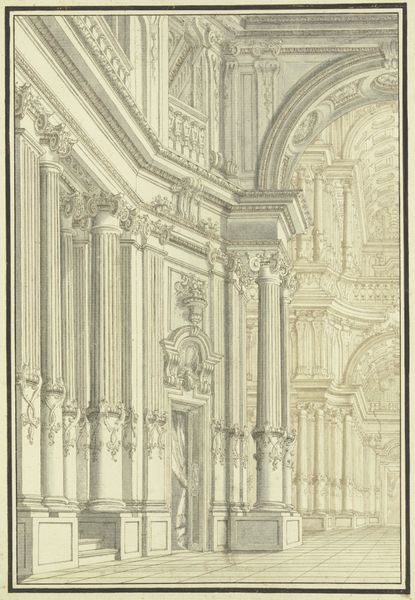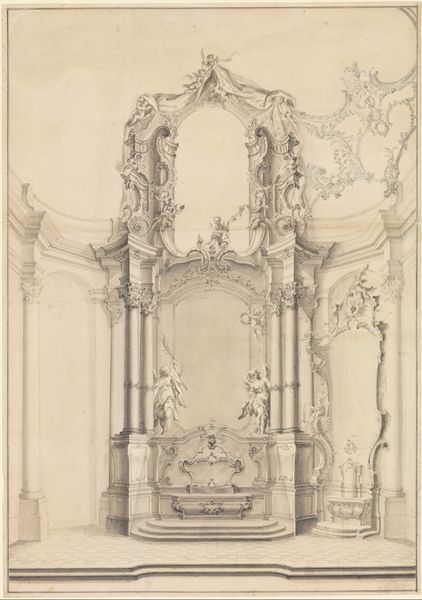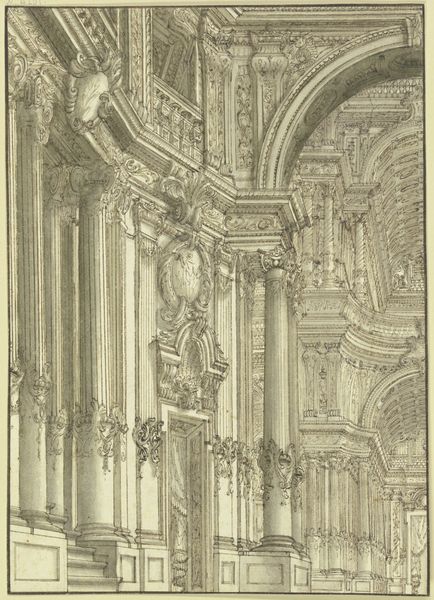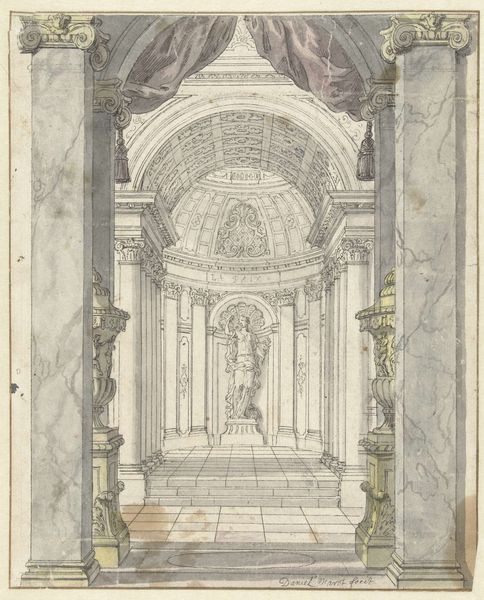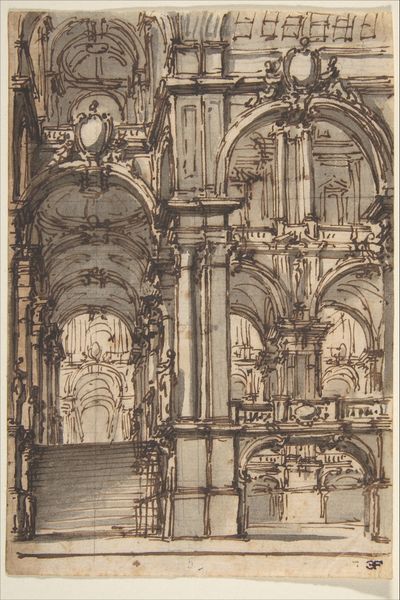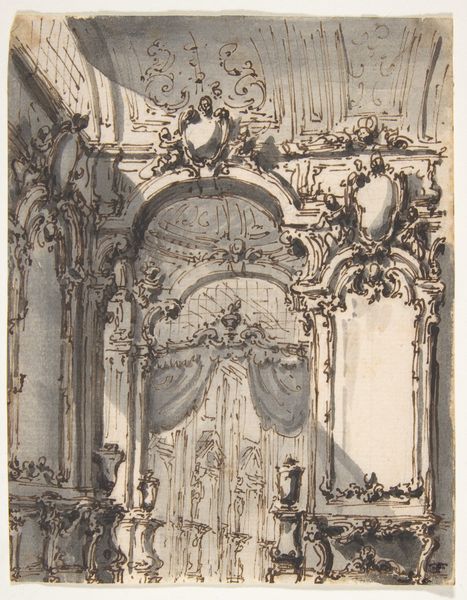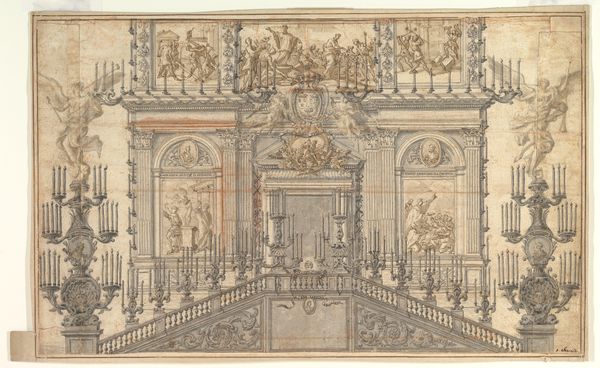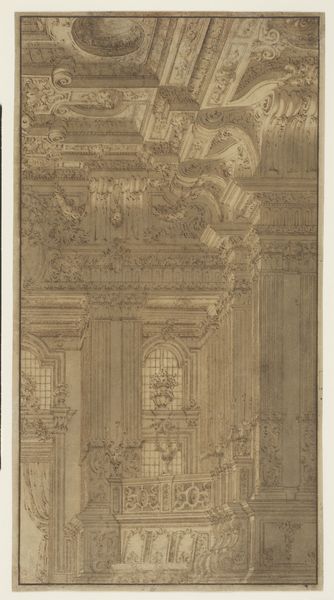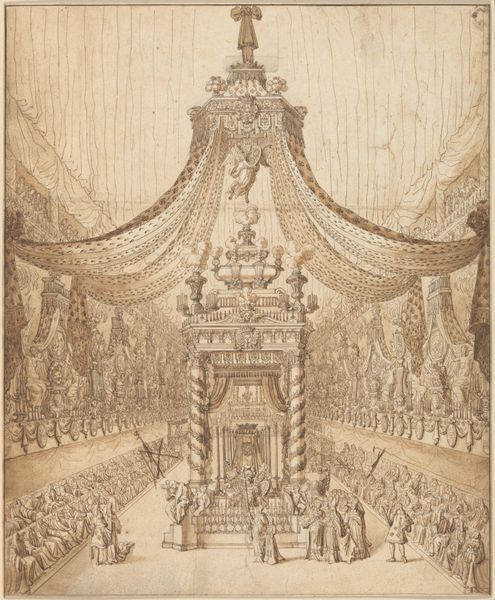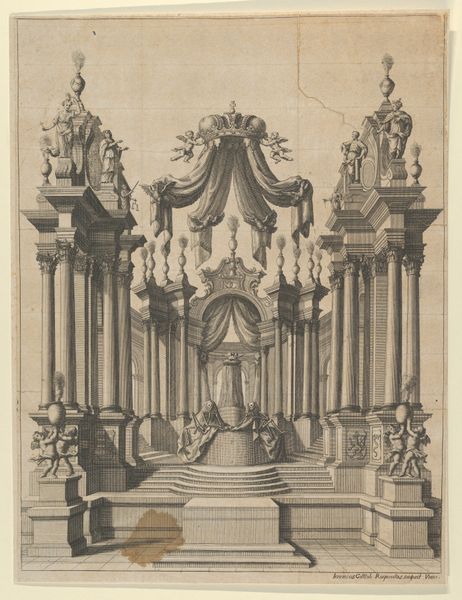
Perspectival Sketch for a Palace Interior. 1696 - 1756
0:00
0:00
drawing, coloured-pencil, print, etching, ink, pen, architecture
#
drawing
#
coloured-pencil
#
baroque
# print
#
etching
#
pencil sketch
#
etching
#
perspective
#
ink
#
coloured pencil
#
pen
#
history-painting
#
architecture
Dimensions: sheet: 5 7/16 x 3 11/16 in. (13.8 x 9.4 cm)
Copyright: Public Domain
Curator: Before us, we have "Perspectival Sketch for a Palace Interior," a drawing created by Giuseppe Galli Bibiena sometime between 1696 and 1756, currently held at the Metropolitan Museum. Editor: My initial impression is one of tremendous space, or at least the illusion of it. The eye is immediately drawn into the center through complex architectural designs, almost like falling down a never-ending well. Curator: Precisely. Bibiena masterfully employs perspective here. Look at how the lines converge to create a sense of depth and grandeur. Note the application of ink, pen, colored pencil and etching to simulate varied tonal qualities, thus intensifying that theatrical ambiance so popular within Baroque aesthetic ideals. Editor: That theatrical quality resonates. This is more than a simple architectural sketch; it's a proposal for a staged reality. We can clearly see that there has been a deliberate process with the layering of multiple materials. You also sense the labor inherent in these repetitive lines— the meticulous craftsmanship involved in constructing this illusion of space on paper. It makes one wonder, what performances were envisioned for this palace interior and who were the people who made that vision come to life. Curator: Undoubtedly, this sketch represents far more than just the final architecture. In employing specific rendering methods with varied material quality, it embodies the essence of Baroque dramatics and theatrical spectacle, an illusion created for elite aesthetic and philosophical values during the seventeenth century. The architecture almost becomes secondary to the scene as a total experience of sensation and perspective. Editor: Right, it begs the question of how something of this magnitude, designed on paper with limited supplies, could ever be materialized, revealing limitations but also triumphs over physical realities of construction work! I imagine that realization of architecture such as what we see represented in this drawing involved immense resource management. Curator: Indeed, it reminds us of the inherent social stratifications involved with staging such visual displays, an essential facet of this sort of artwork from this period in time! Editor: This drawing invites a deep dive into the intersection of design, labor, and social power. A remarkable work that underscores our appreciation for materiality alongside structural innovation.
Comments
No comments
Be the first to comment and join the conversation on the ultimate creative platform.
